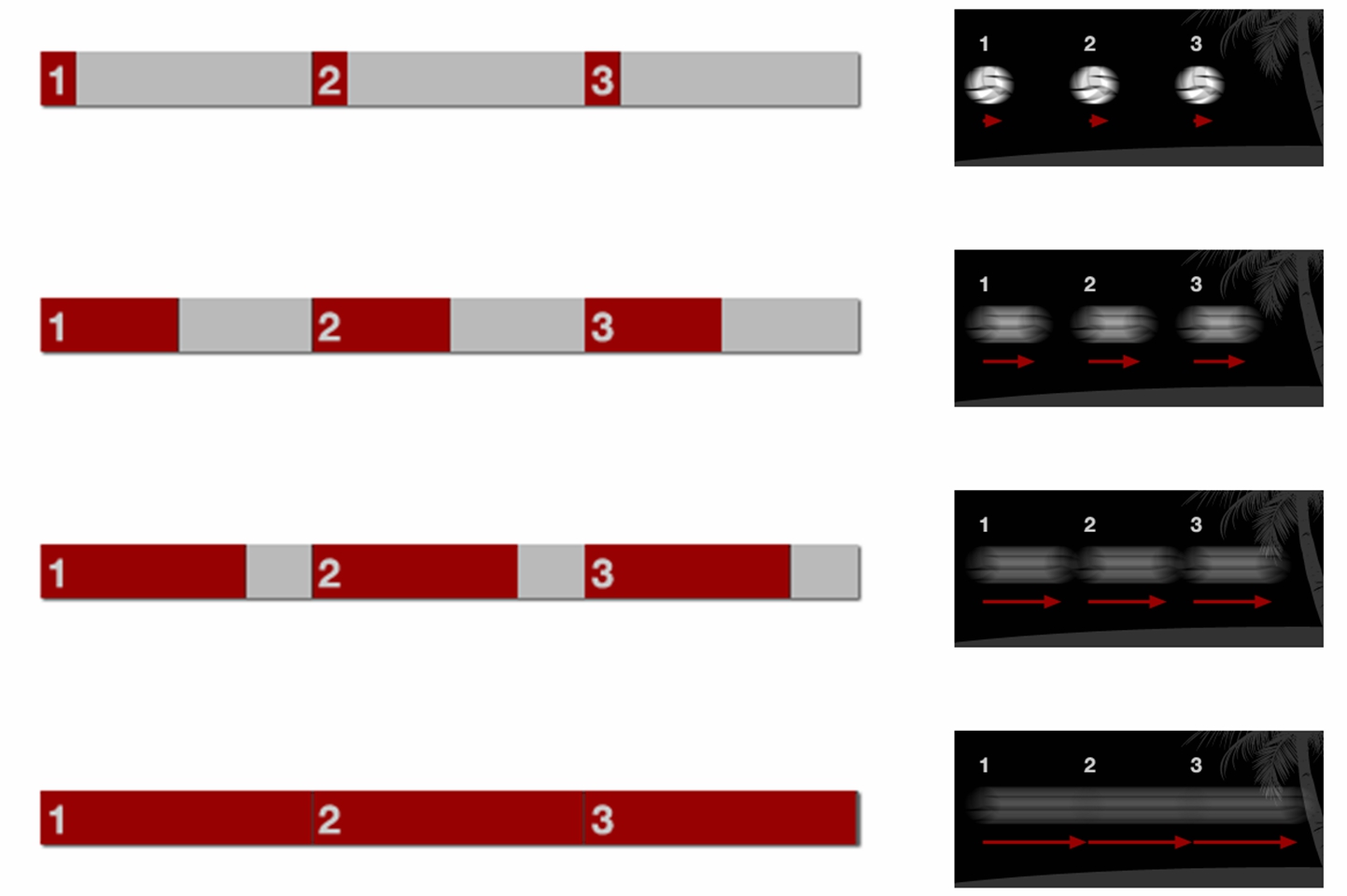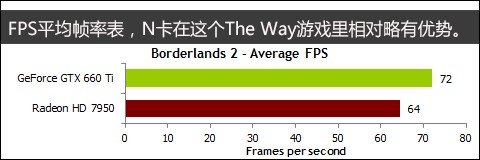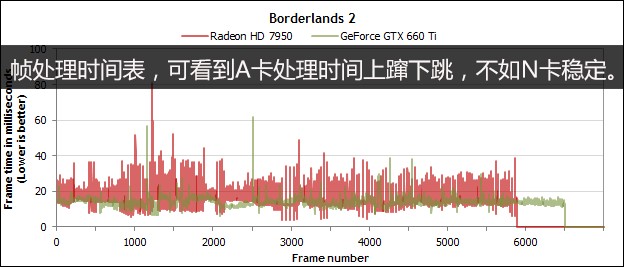
Everyone has played the game for so many years, perhaps there will be a few clouds entangled in the question: Why 2D pixelated antique Super Marie does not play, but the 3D game does it? Why does the movie feel 24 cards per second? But if you don't have 30 frames of your game, you will have to become a Wang Xing? Although there are various answers on the Internet, many of them are not scientific enough to be comprehensive, so I still come to full-scale popular science.
Physiological basis
Frame-by-frame information for motion picture film recordings
All stories should start from the phenomenon of human visual persistence and brain filling. The former refers to the phenomena that the human retina will retain some time after the optical signal disappears; the latter is the brain's own self-complementation screen. The "brain filling" function of the middle frame. Their mix of effects, let us mistakenly believe that the picture played back 24 frames per second is "continuous."
As for why the number is set at 24, there are more conventions and metaphysics. The film specification itself has also undergone a transition from 16 to 24 frames, and this number is estimated to continue to grow. The PAL/NTSC/SECAM three television signal specifications, the number of frames set at 25 frames per second and 30 frames, in fact, because the power supply frequency is different in different regions (50Hz and 60Hz) ... In order to facilitate the calculation, using NTSC system The United States and Japan naturally adopted the habit of 30 frames per second in the game (29.97 frames for the NTSC system).
But why does watching 24 frames of film have no sense of guilt, but there are also Caton in 30 frames or even 60 frames? Here directly to the conclusion, decide the game fluency has four: dynamic blur effect, operation response, frame rate and frame rate uniformity, among which the dynamic blur is the most important.
Dynamic blur refers to the trail of the motion of the camera shutter caused by slower than the movement of the object. Important differences between 3D games and movies: Film is a record of real light and shadow, and 3D games are real-time renderings of 3D model shapes/positions. The former will have dynamic blur, while the latter will not.
A film is a film/digital photograph taken at a constant frequency. It can completely record light information over a period of time. Normally, 24 frames per second video will select a shutter that is twice as high as 1/50 second, and can completely record half a second of light information. These “extra†rich image information will be stacked together like ghosts to cause motion blur/smear. The principle is the same as “light paintingâ€, except that the shutter is not a few seconds, but 1/50 second.

High shutter speed proofs

Low shutter speed proofs
In the human brain, dynamic ambiguity is an important manifestation of visual information. Even if the actual number of frames is not enough, the interval picture with dynamic blur is enough for us to make up the brain and achieve "fluidity." In addition, if the same problem occurs, if the shutter speed is increased to 1/96 second at the same frame rate of 24 frames per second, the recorded light information in the film is only 1/4 second (241/96). The lost light information will make the blur effect lessen. This kind of movie also looks like it will have a petty feeling.

On the left, the amount of light information recorded at different shutter speeds (the slower the shutter, the more light is recorded), the right is the actual picture
The game is to increase the "shutter speed" to the ultimate product. The 30 frames in the game are the 30 infinite moments generated by the game engine. And no matter how fast these moments are, the objects themselves are clearly invisible. There will be no blur effect. If this is still played at 24 frames per second at this time, the brain will protest and the goods move so fast. Why I still see it so clearly and completely unscientific, and the result of the "brain filling smoothness" process cannot be carried out. We will Really watching the broadcast slide.
To solve this problem, either increase the sampling rate or artificially increase the blurring effect. The former is a high frame rate scheme that will be mentioned below, and the latter is to increase the blurring effect to deceive the brain and make it think that it is a picture with a high amount of information (however, the blur effect also consumes resources).
Frame rateThe objects in the game may feel smooth if they move 1 pixel per second, but if the object moves 10 pixels per second, there will be obvious passages. At this time, we need to increase the sampling rate and make up the missing picture. If the number of frames is increased to 10 frames per second, we can see the fluency close to 1 pixel in 1 second.
By raising the picture of 24 frames per second to 48 or even 60 frames per second, the amount of information received by both eyes is enough to be used as a "brain-buying" effect. Although the most perfect game should be to have as many frames as possible, that is the real simulation of reality, but for the game, the more the number of frames rendered, the higher the required performance, and the cost of this solution is too great. Now it is generally accepted that 30 brains can be completed.
Frame rate uniformityHowever, in the actual game, 30 frames will still be stuck, and even raising to 60 frames will still be the card. When we regularly evaluate mobile phones, often two mobile phones with different GPUs, even if the display FPS (frames per second) is the same, still have a fluency difference, which is why?

Comparison of the number of frames of the two cards

Comparison of frame rendering time of two graphics cards
The problem here lies in the accuracy of the "frame". Even if the previous time can be rendered more than 30 frames, but as long as there are a few moments below 30 frames, it is still a card. Ideally 30 frames per second is 30 frames evenly distributed, but in reality it is possible to render 29 frames in the first half of the second and only 1 frame in the last half a second.
Because of the limitation of computing power and picture complexity (for example, sudden explosions from the plains), the rendering pressure is small in the first half of a second and can be run in full frames. However, as soon as an explosion occurs, the amount of computation is soaring that it is too late to render, and the number of subsequent frames will fall. Although the naked eye is insensitive to the absolute value of the frame number, the apparent change in the number of frames can still be easily perceived.
It is obvious that the accuracy of the FPS (frames per second) we see at a normal time is not enough. We need to increase the precision from many frames per second to how many frames per millisecond in order to accurately measure the stability of the frame rate.
Response time and quicknessThe biggest difference between games and movies is that the game requires the user to make actions and give feedback in real time. In addition to visual fluency, we also need to operate fluently. Everyone is pursuing an important reason for 60 frames of high frame rate in order to reduce the response time. When we perceive whether an action is completed, it is necessary for the machine to accept the operation information and finally reflect it in the next frame. In actual operation, most game engines require 3 frames to display on the screen after they accept the operation instructions.
The higher the refresh rate of frames, the faster we can sense the operation. In the 30-frame game, even if the transmission speed of the operation instruction is ignored, each frame lasts 33 milliseconds (1s/30=0.033s), one operation requires 100 milliseconds (33 milliseconds and 3 frames) to be reflected on the screen, and 60 frames of the game, It only takes 50 milliseconds to respond. This 50 milliseconds, in the game is likely to decide whether you're headshot or headshot.
In addition, if the picture pressure is too high, the machine is too late to render, the frame appears out of frame or even stuck, our operation instructions will be delayed input. The effect is what we did a few seconds ago. It only appeared on the screen one by one after a few seconds. This is the legendary card into the sky...

![<?echo $_SERVER['SERVER_NAME'];?>](/template/twentyseventeen/skin/images/header.jpg)